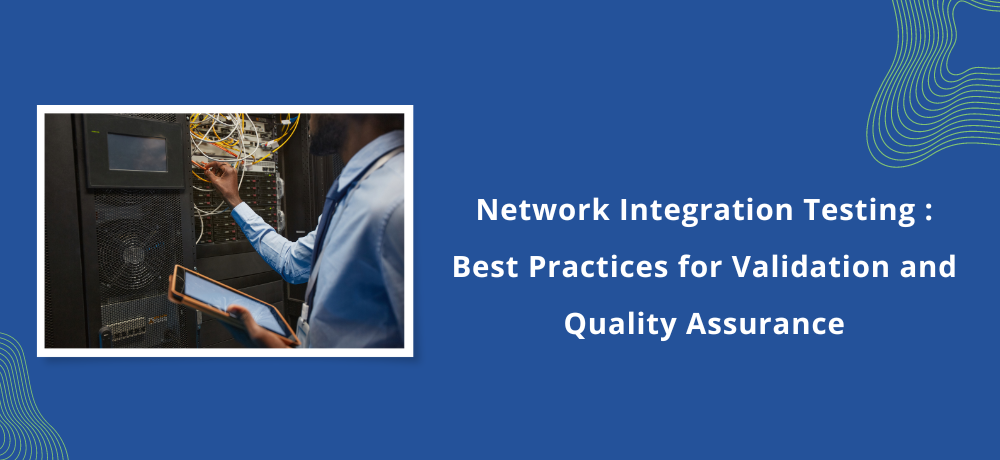Network Integration Testing: Best Practices for Validation and Quality Assurance

In the dynamic landscape of modern business, where efficient communication and data flow are paramount, network integration testing stands as a crucial step in ensuring the reliability and functionality of your network infrastructure. ExcelLinx Communications a leader in providing high-quality solutions for Data Centres, Network Infrastructure, Converged Media and Audio Visual, Business Telephony, Security, and nationwide IT project rollouts, understands the significance of network integration testing. Whether you're in Markham, the Greater Toronto Area, or beyond, our expertise can help you achieve seamless network integration.
Understanding Network Integration Testing
Network integration testing is a critical phase in the development and deployment of complex network systems. It involves assessing how different components and subsystems of a network work together to ensure seamless communication and functionality. This testing process validates that various hardware and software elements, such as routers, switches, servers, and applications, can operate harmoniously as a cohesive network infrastructure.
During network integration testing, engineers simulate real-world scenarios to evaluate the network's performance, reliability, and scalability. This includes testing for data transmission, security measures, load handling, and fault tolerance. Any issues or inconsistencies discovered during this phase can be addressed and resolved before the network is put into production. Successful network integration testing is instrumental in ensuring that the network meets the intended objectives and can efficiently support the demands of users and applications while minimizing disruptions and downtime.
Identifying Potential Bottlenecks
Identifying potential bottlenecks is a crucial aspect of optimizing and maintaining the efficiency of any system, whether it's a computer network, manufacturing process, or traffic flow. Bottlenecks are points within a system where the rate of data transfer, processing, or resource allocation is slower than the rate at which data or tasks are arriving. These bottlenecks can significantly hinder overall system performance and throughput.
To identify potential bottlenecks, thorough system monitoring and analysis are essential. This involves collecting data on various system metrics, such as CPU usage, memory utilization, network bandwidth, and response times. By closely monitoring these metrics, you can pinpoint areas where resource constraints or inefficiencies may be causing slowdowns. Performance profiling tools and load testing can also help simulate heavy workloads to identify how the system responds under stress, revealing any weaknesses or bottlenecks. Once identified, addressing these bottlenecks through hardware upgrades, software optimizations, or workflow adjustments is critical for maintaining a smoothly functioning and efficient system.
Ensuring Compatibility
Ensuring compatibility is a fundamental consideration when dealing with various technology components, software applications, or devices within a system. Compatibility refers to the ability of different elements to work seamlessly together without conflicts or issues.
In the context of technology, compatibility can involve hardware and software compatibility. For hardware, it means ensuring that components like processors, memory, and interfaces are compatible with each other, as well as with the software that will run on them. For software, it involves making sure that different applications and operating systems can work together, share data, and function as intended without causing crashes or errors.
Compatibility testing is a common practice used to verify that various system components, devices, or software versions can interact harmoniously. Ensuring compatibility is crucial to prevent system failures, data corruption, or functionality issues that can disrupt operations and productivity. It also allows businesses and individuals to take advantage of the latest technologies and innovations while maintaining a stable and reliable technology ecosystem.
Mitigating Security Risks
Mitigating security risks is a fundamental aspect of cybersecurity that aims to protect digital assets and sensitive information from threats and vulnerabilities. One key strategy in risk mitigation is implementing a multi-layered defense approach. This involves using a combination of security tools and practices, such as firewalls, antivirus software, intrusion detection systems, and regular security audits. By layering these defenses, organizations create a stronger security posture that can detect and respond to a wide range of threats.
Another essential aspect of security risk mitigation is proactive threat intelligence and monitoring. Continuously monitoring network traffic and system logs for unusual activities or patterns can help detect security breaches in their early stages. Combining this with threat intelligence, which involves staying informed about the latest cyber threats and attack techniques, allows organizations to adapt their security measures in real-time to address emerging risks. In a constantly evolving threat landscape, effective security risk mitigation is an ongoing process that requires vigilance, adaptability, and a commitment to safeguarding digital assets.
Validation for Business Continuity
Validation for business continuity is a crucial process that ensures an organization's preparedness to navigate disruptions and maintain operations, even in the face of unexpected challenges. This validation involves testing and verifying the effectiveness of a business continuity plan (BCP). By conducting regular exercises, simulations, and real-world scenarios, businesses can identify gaps, weaknesses, and areas for improvement in their BCPs.
One common form of validation is conducting tabletop exercises, where key personnel participate in a simulated crisis situation, making decisions and taking actions as they would in a real emergency. Additionally, organizations may perform technical tests, such as failover testing for IT systems, to validate their ability to recover critical functions. Validation not only assesses the resilience of an organization but also provides an opportunity to refine and update the BCP, ensuring that it remains relevant and effective in the face of evolving threats and changing business dynamics. Ultimately, validation for business continuity is an essential component of risk management, helping organizations maintain stability and minimize disruptions during challenging times.
Network integration testing is a non-negotiable step in ensuring the reliability and performance of your network infrastructure. If you're looking to enhance your network's reliability, compatibility, and security through effective integration testing, contact ExcelLinx Communications today. We bring years of expertise and a commitment to excellence in providing top-notch network integration testing solutions.
Get in touch with us today
To learn more about what we do, please click here. To contact us, please click here or call us at (647) 362-1979.